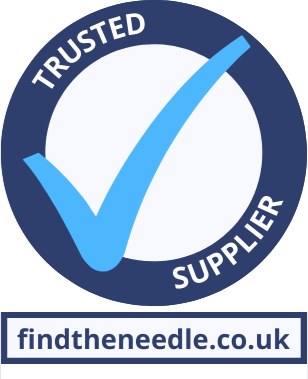How to Choose the Right Contract Fabric Company for Your Industry
- 22 Apr 2025
- Articles
Choosing the right contract fabric supplier can make or break a project—whether you’re furnishing a hotel, designing hospital seating, kitting out a cruise ship, or developing a stylish co-working space. Unlike standard fabrics, contract fabrics must meet strict technical, durability, and compliance requirements. But with hundreds of fabric companies on the market, how do you choose the right one?
Let’s break it down. Below are the essential criteria to help you find a partner that delivers on performance, aesthetics, and long-term value.
1. Evaluate Fabric Performance and Technical Specifications
In commercial environments, fabrics are subject to far more wear and tear than residential ones. Whether it’s constant foot traffic, food and drink spills, UV exposure, or rigorous cleaning protocols, your fabric choice must be ready for it all.
Look for contract fabric suppliers who clearly list and test for:
-
Fire Retardancy (FR): Most commercial sectors legally require fabrics to meet national or international FR standards. Make sure your supplier complies with regulations such as BS 5852 (UK), CAL 117 (US), or EN 1021 (EU).
-
Waterproof and Stain Resistant Finishes: Waterproof upholstery is critical for sectors like hospitality, marine, and healthcare. Fabrics with built-in stain guards or coatings like polyurethane are easier to maintain and last longer.
-
Antimicrobial or Antibacterial Coatings: Especially important in healthcare, assisted living, and gym environments, antimicrobial fabrics help limit the spread of bacteria, fungi, and viruses.
-
Abrasion Resistance: Fabrics in heavy-use areas (like waiting rooms or hotel lobbies) should have high rub counts—often tested with the Martindale or Wyzenbeek method. Look for fabrics rated over 50,000 cycles for optimal durability.
Don’t just rely on the marketing—ask to see certificates or test results that back up a fabric’s technical claims.
2. Look for Experience in Your Specific Industry
While many companies offer contract-grade textiles, very few specialize in your specific industry. A supplier who knows the ins and outs of your sector can anticipate common challenges and provide fabric recommendations that are both practical and stylish.
For example, a supplier with hospitality experience understands the balance between durability and aesthetic appeal. In contrast, a healthcare-focused vendor will prioritize hygiene, flame resistance, and comfort.
Take Agua Fabrics, for instance. Originally starting with uniform textiles for the NHS, they’ve since evolved into a leader in waterproof, flame-retardant, and antimicrobial upholstery fabrics. Their deep understanding of both healthcare and hospitality needs makes them a go-to partner for projects where performance and design go hand in hand.
3. Assess the Range of Fabric Options Available
A wide range of colors, textures, and styles isn't just a nice-to-have—it’s essential. Your space needs to look good as well as function effectively. A good contract fabric supplier will offer a diverse selection of:
-
Textures: From faux leather and velvet to woven weaves and structured textiles.
-
Colorways: A rich palette to match brand guidelines, interior themes, or seasonal updates.
-
Patterns & Embossing: Subtle or bold patterns can help define zones or add a layer of sophistication.
Better yet, some companies offer customization—letting you tweak existing fabric designs or create something entirely new. This is particularly useful for architects, interior designers, and developers who want to set their projects apart.
4. Consider Sustainability and Environmental Credentials
Sustainability is no longer optional—clients and consumers expect it. Leading fabric companies are now taking steps to reduce their environmental impact through:
-
Using recycled yarns and eco-friendly finishes
-
Manufacturing with low water and low energy processes
-
Offering take-back programs or cradle-to-cradle initiatives
Ask whether the supplier’s products are REACH-compliant, Oeko-Tex certified, or ISO 14001 certified. Some even go further with third-party verification on carbon neutrality or full life-cycle assessments.
Choosing a sustainable supplier is not just good for the planet—it’s great PR and increasingly important for winning commercial tenders.
5. Global Logistics and Availability
A beautiful, high-performing fabric is no use to you if it takes 14 weeks to arrive or is constantly out of stock.
Work with a supplier who has efficient warehousing and distribution networks, ideally on a global scale. They should be able to deliver anywhere—quickly and reliably. Check:
-
Average lead times
-
Stock levels and real-time availability
-
Freight options and export experience
-
International customer support
Agua Fabrics, for example, has a robust global distribution setup, allowing them to ship quickly to clients in the UK, Europe, and beyond. That kind of logistical reliability can save weeks—or even months—on a project timeline.
6. Ongoing Support and Fabric Expertise
Great suppliers don’t just sell you rolls of fabric—they become strategic partners in your success. Look for those who:
-
Offer sampling services and project consultations
-
Can match or recommend alternatives for discontinued lines
-
Provide detailed care and maintenance guides
-
Have an accessible technical team to help with compliance questions
Fabric selection can involve many moving parts: fire tests, custom cuts, installation advice, and performance guarantees. A responsive, knowledgeable partner can be the difference between a smooth install and a last-minute panic.
7. Price vs. Value
Lastly, consider your budget—but don’t default to the cheapest option. Cheaper fabrics often mean lower durability, poor stain resistance, or failed fire tests. Over time, these issues can lead to costly replacements, downtime, or even failed inspections.
Instead, weigh the total value of what you’re getting:
-
Is the fabric built to last?
-
Are you saving time by working with a vendor who offers support and fast delivery?
-
Will this partner help you meet certifications and avoid rework?
Opting for a slightly higher upfront cost can save you money in the long run—and earn you better client reviews, too.
8. Signs of a Pro-Level Supplier
One subtle but telling sign of a quality contract fabric company? Look at how they manage communication and client experience. Suppliers that use professional customer relationship tools—like CRM platforms such as GoHighLevel or a Monday.com expert —often have smoother onboarding, faster response times, and more organized follow-up. It’s a reflection of how seriously they take their business—and yours.
While it’s not the first question you’ll ask, noticing whether a company uses a streamlined system can give you insight into how they’ll handle your orders, support needs, and long-term relationship.
Final Thoughts
Choosing a contract fabric supplier is about more than just color swatches. It’s about finding a partner who understands your industry, delivers reliable performance, offers variety, and helps you meet today’s environmental and regulatory standards.
Companies like Agua Fabrics are a good example of what to look for: decades of experience, robust product testing, and a forward-thinking approach to innovation and sustainability.
So whether you're outfitting a cruise liner, designing a modern care facility, or refreshing a chain of boutique hotels—invest the time to choose the right fabric partner. Your clients (and your bottom line) will thank you.








